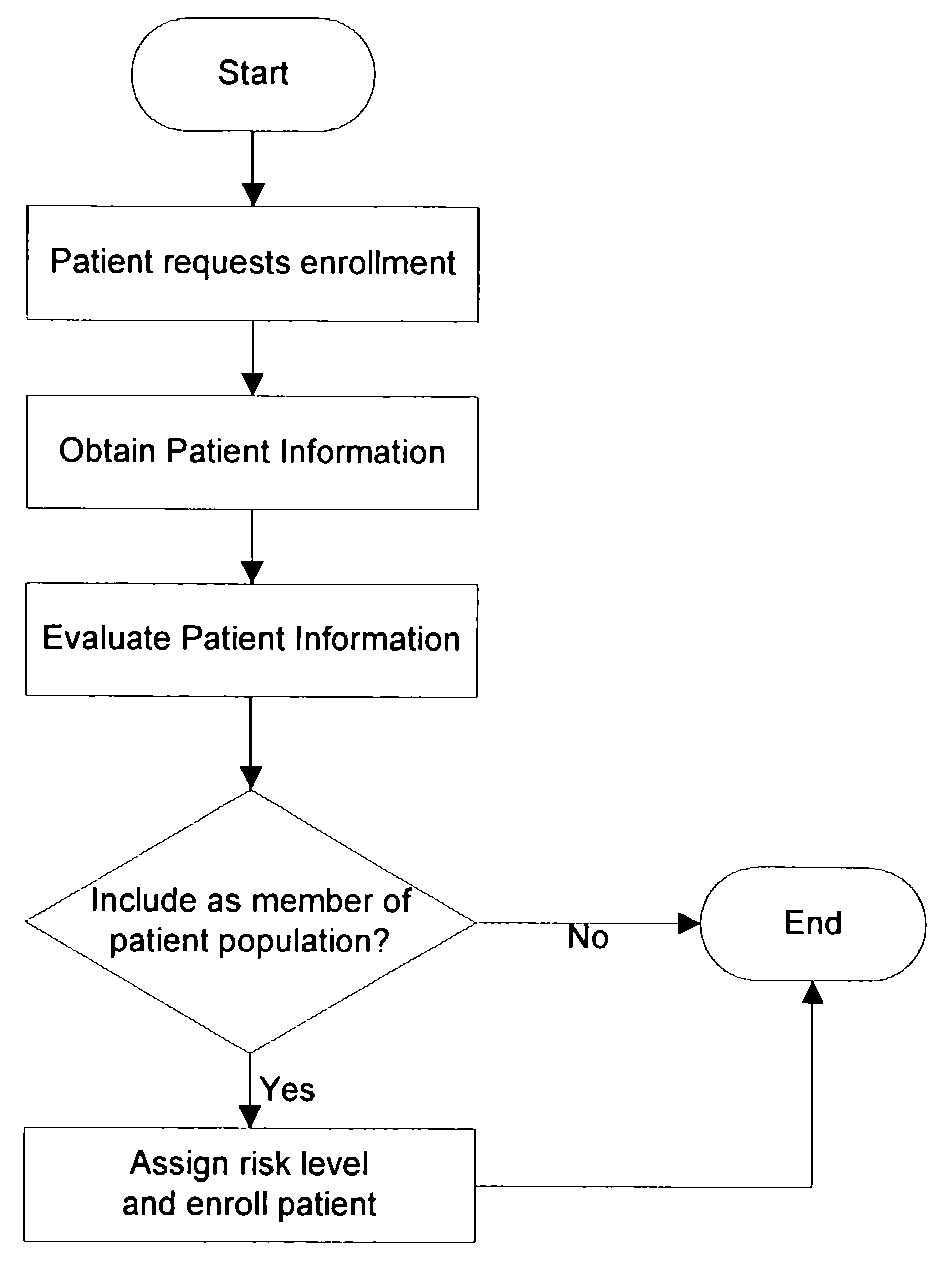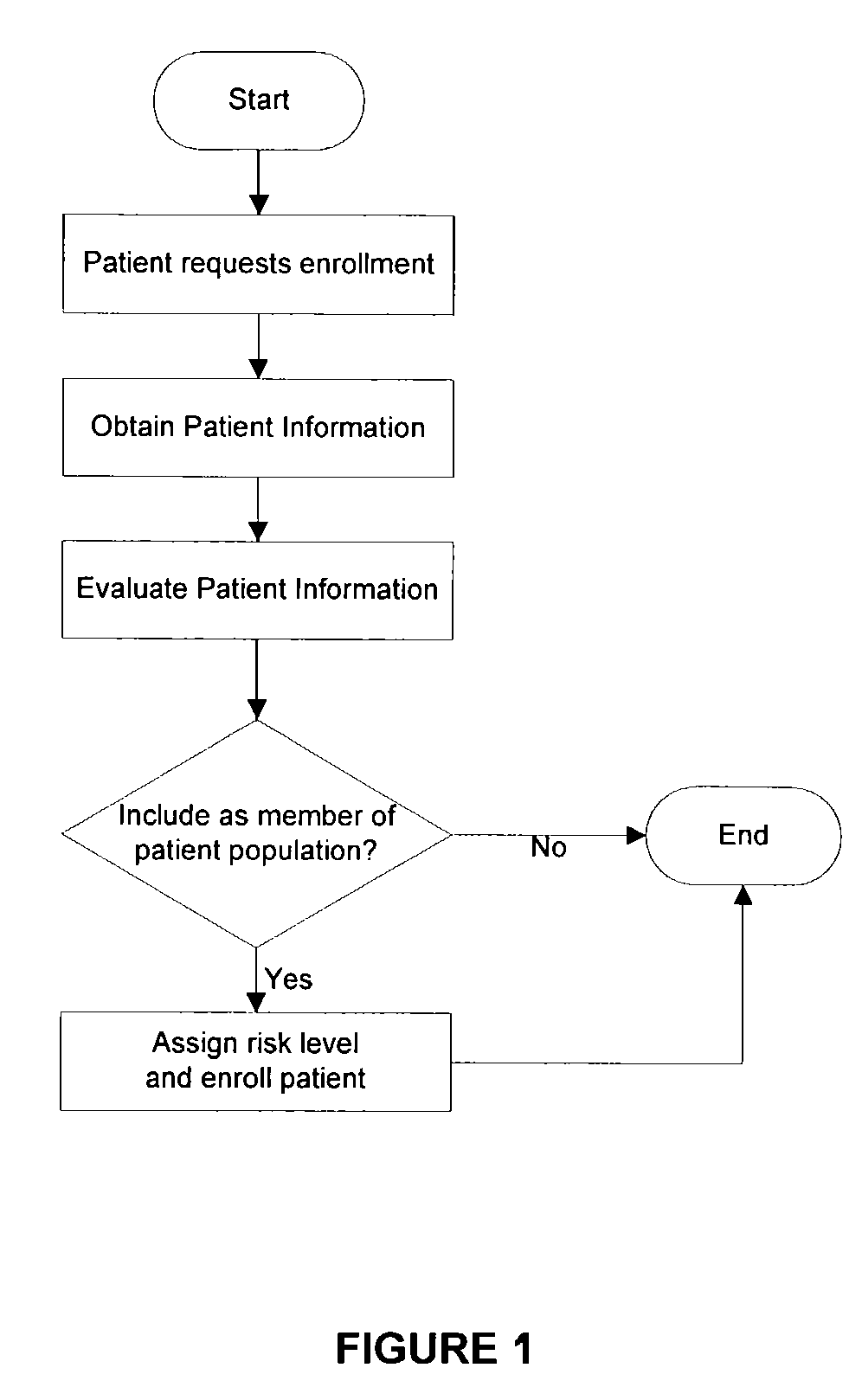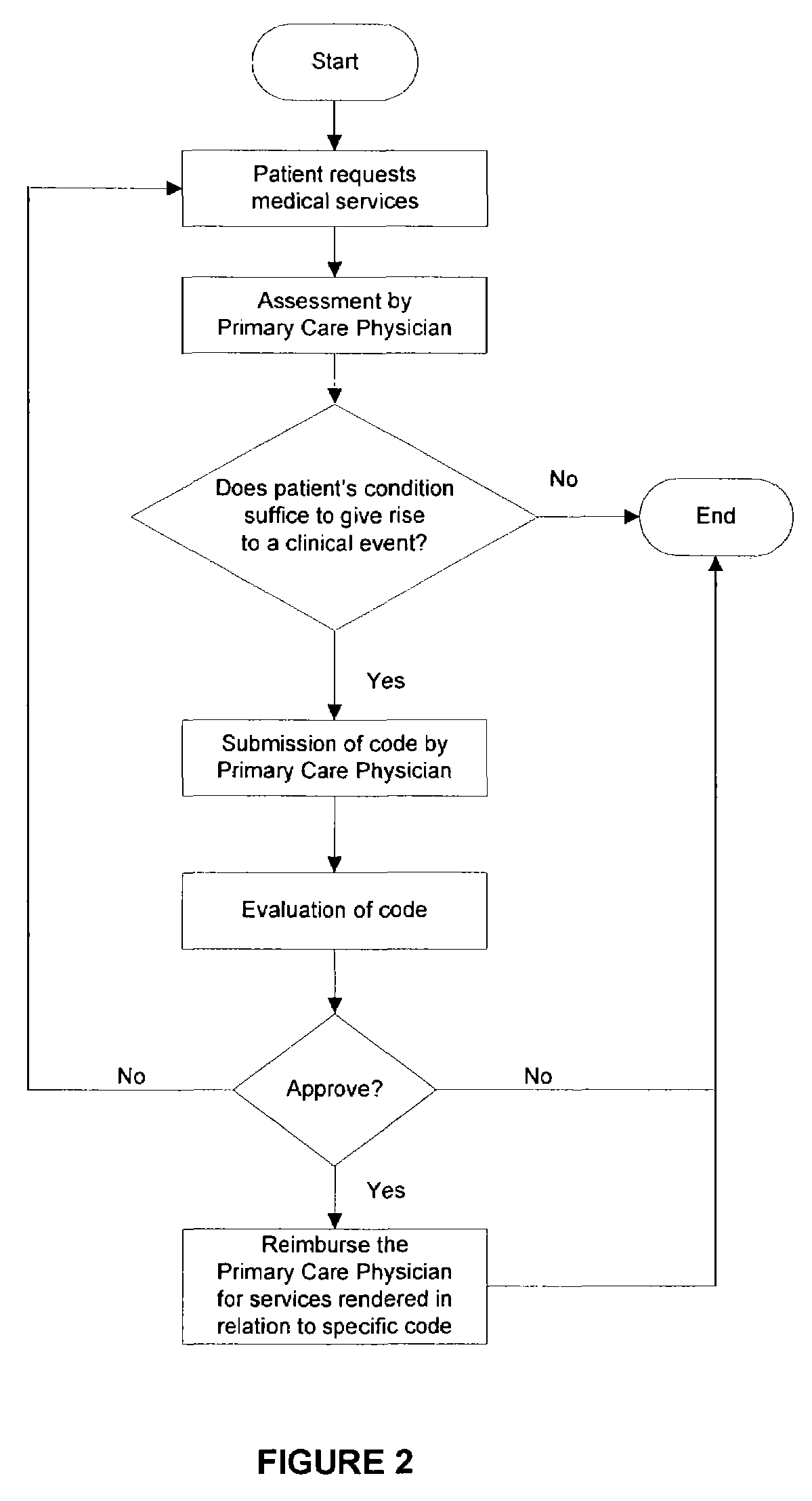Health care administration method
a health care and administration method technology, applied in the field of health care administration methods, can solve the problems of huge abuse in the current administration of health care in the united states, gross inefficiency in utilization of health care resources, wasteful practices such as duplicated and unnecessary tests and procedures, etc., to reduce the ability of patients, eliminate fraud and abusive practices, and cost-effective
- Summary
- Abstract
- Description
- Claims
- Application Information
AI Technical Summary
Benefits of technology
Problems solved by technology
Method used
Image
Examples
Embodiment Construction
[0022]The detailed description set forth below is intended as a description of the presently preferred embodiment of the invention, and is not intended to represent the only form in which the present invention may be constructed or utilized. The description sets forth the functions and sequences of steps for constructing and operating the invention. It is to be understood, however, that the same or equivalent functions and sequences may be accomplished by different embodiments and that they are also intended to be encompassed within the scope of the invention.
[0023]The present invention is directed to methods for conserving the utilization of health care resources to thus enable a population of patients to be cared for in a manner that is substantially more efficient and effective than prior art methods, particularly with respect to those utilization practices of most health insurance plans, health maintenance organizations, and government sponsored health care programs, such as Med...
PUM
 Login to View More
Login to View More Abstract
Description
Claims
Application Information
 Login to View More
Login to View More - R&D
- Intellectual Property
- Life Sciences
- Materials
- Tech Scout
- Unparalleled Data Quality
- Higher Quality Content
- 60% Fewer Hallucinations
Browse by: Latest US Patents, China's latest patents, Technical Efficacy Thesaurus, Application Domain, Technology Topic, Popular Technical Reports.
© 2025 PatSnap. All rights reserved.Legal|Privacy policy|Modern Slavery Act Transparency Statement|Sitemap|About US| Contact US: help@patsnap.com



